At least one-third of the people we know
are introverts. They are the ones who prefer listening to speaking,
reading to partying; who innovate and create but dislike self-promotion;
who favor working on their own over brainstorming in teams. Although
they are often labeled "quiet," it is to introverts that we owe many of
the great contributions to society--from van Gogh’s sunflowers to the
invention of the personal computer.
Passionately argued, impressively researched, and filled with indelible stories of real people, Quiet shows how dramatically we undervalue introverts, and how much we lose in doing so. Taking the reader on a journey from Dale Carnegie’s birthplace to Harvard Business School, from a Tony Robbins seminar to an evangelical megachurch, Susan Cain charts the rise of the Extrovert Ideal in the twentieth century and explores its far-reaching effects. She talks to Asian-American students who feel alienated from the brash, backslapping atmosphere of American schools. She questions the dominant values of American business culture, where forced collaboration can stand in the way of innovation, and where the leadership potential of introverts is often overlooked. And she draws on cutting-edge research in psychology and neuroscience to reveal the surprising differences between extroverts and introverts.
Perhaps most inspiring, she introduces us to successful introverts--from a witty, high-octane public speaker who recharges in solitude after his talks, to a record-breaking salesman who quietly taps into the power of questions. Finally, she offers invaluable advice on everything from how to better negotiate differences in introvert-extrovert relationships to how to empower an introverted child to when it makes sense to be a "pretend extrovert."
This extraordinary book has the power to permanently change how we see introverts and, equally important, how introverts see themselves.
A young woman walks into a laboratory. Over the past two years, she has transformed almost every aspect of her life. She has quit smoking, run a marathon, and been promoted at work. The patterns inside her brain, neurologists discover, have fundamentally changed.
Marketers at Procter & Gamble study videos of people making their beds. They are desperately trying to figure out how to sell a new product called Febreze, on track to be one of the biggest flops in company history. Suddenly, one of them detects a nearly imperceptible pattern—and with a slight shift in advertising, Febreze goes on to earn a billion dollars a year.
An untested CEO takes over one of the largest companies in America. His first order of business is attacking a single pattern among his employees—how they approach worker safety—and soon the firm, Alcoa, becomes the top performer in the Dow Jones.
What do all these people have in common? They achieved success by focusing on the patterns that shape every aspect of our lives.
They succeeded by transforming habits.
In The Power of Habit, award-winning New York Times business reporter Charles Duhigg takes us to the thrilling edge of scientific discoveries that explain why habits exist and how they can be changed. With penetrating intelligence and an ability to distill vast amounts of information into engrossing narratives, Duhigg brings to life a whole new understanding of human nature and its potential for transformation.
Along the way we learn why some people and companies struggle to change, despite years of trying, while others seem to remake themselves overnight. We visit laboratories where neuroscientists explore how habits work and where, exactly, they reside in our brains. We discover how the right habits were crucial to the success of Olympic swimmer Michael Phelps, Starbucks CEO Howard Schultz, and civil-rights hero Martin Luther King, Jr. We go inside Procter & Gamble, Target superstores, Rick Warren’s Saddleback Church, NFL locker rooms, and the nation’s largest hospitals and see how implementing so-called keystone habits can earn billions and mean the difference between failure and success, life and death.
At its core, The Power of Habit contains an exhilarating argument: The key to exercising regularly, losing weight, raising exceptional children, becoming more productive, building revolutionary companies and social movements, and achieving success is understanding how habits work.
Habits aren’t destiny. As Charles Duhigg shows, by harnessing this new science, we can transform our businesses, our communities, and our lives.
Did you know that the most creative companies have centralized bathrooms? That brainstorming meetings are a terrible idea? That the color blue can help you double your creative output?
Passionately argued, impressively researched, and filled with indelible stories of real people, Quiet shows how dramatically we undervalue introverts, and how much we lose in doing so. Taking the reader on a journey from Dale Carnegie’s birthplace to Harvard Business School, from a Tony Robbins seminar to an evangelical megachurch, Susan Cain charts the rise of the Extrovert Ideal in the twentieth century and explores its far-reaching effects. She talks to Asian-American students who feel alienated from the brash, backslapping atmosphere of American schools. She questions the dominant values of American business culture, where forced collaboration can stand in the way of innovation, and where the leadership potential of introverts is often overlooked. And she draws on cutting-edge research in psychology and neuroscience to reveal the surprising differences between extroverts and introverts.
Perhaps most inspiring, she introduces us to successful introverts--from a witty, high-octane public speaker who recharges in solitude after his talks, to a record-breaking salesman who quietly taps into the power of questions. Finally, she offers invaluable advice on everything from how to better negotiate differences in introvert-extrovert relationships to how to empower an introverted child to when it makes sense to be a "pretend extrovert."
This extraordinary book has the power to permanently change how we see introverts and, equally important, how introverts see themselves.
A young woman walks into a laboratory. Over the past two years, she has transformed almost every aspect of her life. She has quit smoking, run a marathon, and been promoted at work. The patterns inside her brain, neurologists discover, have fundamentally changed.
Marketers at Procter & Gamble study videos of people making their beds. They are desperately trying to figure out how to sell a new product called Febreze, on track to be one of the biggest flops in company history. Suddenly, one of them detects a nearly imperceptible pattern—and with a slight shift in advertising, Febreze goes on to earn a billion dollars a year.
An untested CEO takes over one of the largest companies in America. His first order of business is attacking a single pattern among his employees—how they approach worker safety—and soon the firm, Alcoa, becomes the top performer in the Dow Jones.
What do all these people have in common? They achieved success by focusing on the patterns that shape every aspect of our lives.
They succeeded by transforming habits.
In The Power of Habit, award-winning New York Times business reporter Charles Duhigg takes us to the thrilling edge of scientific discoveries that explain why habits exist and how they can be changed. With penetrating intelligence and an ability to distill vast amounts of information into engrossing narratives, Duhigg brings to life a whole new understanding of human nature and its potential for transformation.
Along the way we learn why some people and companies struggle to change, despite years of trying, while others seem to remake themselves overnight. We visit laboratories where neuroscientists explore how habits work and where, exactly, they reside in our brains. We discover how the right habits were crucial to the success of Olympic swimmer Michael Phelps, Starbucks CEO Howard Schultz, and civil-rights hero Martin Luther King, Jr. We go inside Procter & Gamble, Target superstores, Rick Warren’s Saddleback Church, NFL locker rooms, and the nation’s largest hospitals and see how implementing so-called keystone habits can earn billions and mean the difference between failure and success, life and death.
At its core, The Power of Habit contains an exhilarating argument: The key to exercising regularly, losing weight, raising exceptional children, becoming more productive, building revolutionary companies and social movements, and achieving success is understanding how habits work.
Habits aren’t destiny. As Charles Duhigg shows, by harnessing this new science, we can transform our businesses, our communities, and our lives.
Did you know that the most creative companies have centralized bathrooms? That brainstorming meetings are a terrible idea? That the color blue can help you double your creative output?
From the bestselling author of How We Decide comes a
sparkling and revelatory look at the new science of creativity.
Shattering the myth of muses, higher powers, even creative “types,”
Jonah Lehrer demonstrates that creativity is not a single “gift”
possessed by the lucky few. It’s a variety of distinct thought processes
that we can all learn to use more effectively. Lehrer reveals
the importance of embracing the rut, thinking like a child, and
daydreaming productively, then he takes us out of our own heads to show
how we can make our neighborhoods more vibrant, our companies more
productive, and our schools more effective. We’ll learn about Bob
Dylan’s writing habits and the drug addiction of poets. We’ll meet a
bartender who thinks like a chemist, and an autistic surfer who invented
an entirely new surfing move. We’ll see why Elizabethan England
experienced a creative explosion, and how Pixar designed its office
space to get the most out of its talent. Collapsing the layers
separating the neuron from the finished symphony, Imagine reveals the deep inventiveness of the human mind, and its essential role in our increasingly complex world.
Every day offers moments of decision, from what to eat for lunch to how to settle a dispute with a colleague. Still larger questions loom: How can I motivate my team? How can I work more efficiently? What is the long tail anyway?
Whether you're a newly minted MBA, a chronic second-guesser, or just someone eager for a new vantage point, The Decision Book presents fifty models for better structuring, and subsequently understanding, life's steady challenges. Interactive and thought-provoking, this illustrated workbook offers succinct summaries of popular strategies, including the Rubber Band Model for dilemmas with many directions, the Personal Performance Model to test whether to change jobs, and the Black Swan Model to illustrate why experience doesn't guarantee wisdom. Packed with familiar tools like the Pareto Principle, the Prisoner's Dilemma, and an unusual exercise inspired by Warren Buffet, The Decision Book is the ideal reference for flexible thinkers.
At twenty-two, Cheryl Strayed thought she had lost everything. In the wake of her mother's death, her family scattered and her own marriage was soon destroyed. Four years later, with nothing more to lose, she made the most impulsive decision of her life: to hike the Pacific Crest Trail from the Mojave Desert through California and Oregon to Washington State—and to do it alone. She had no experience as a long-distance hiker, and the trail was little more than “an idea, vague and outlandish and full of promise.” But it was a promise of piecing back together a life that had come undone.
Strayed faces down rattlesnakes and black bears, intense heat and record snowfalls, and both the beauty and loneliness of the trail. Told with great suspense and style, sparkling with warmth and humor, Wild vividly captures the terrors and pleasures of one young woman forging ahead against all odds on a journey that maddened, strengthened, and ultimately healed her.
What are we afraid of and what can we do about it?
Fear--of change, of intimacy, of loss, of the unknown--has become a corrosive influence in modern life, eroding our ability to think clearly. Exploited for power by politicians and for money by the media, it has become embedded in the way we think about our lives. Overcoming our fear, says Gordon Livingston, constitutes the most difficult struggle we face.
Dr. Livingston, a psychiatrist, has increasingly found himself prescribing virtues like courage to his patients instead of tranquilizers or antidepressants. Now he tells us all what we need to do to develop personal virtues in the face of societal fear—and our own individual fears. And he does this with the crystalline prose and leavening wit that have made him an internationally bestselling author.
As the celebrated novelist Mark Helprin has said of Dr. Livingston: “To read him is to trust him and to learn, for his life has been touched by fire, and his motives are absolutely pure.”
Timeless in their wisdom, thought-provoking in their message, surprising in their truth and memorable in their originality, the right words can give direction, inspiration, and sometimes a tangible boost onto the right path. For example, Steve Jobs once read “Stay hungry Stay foolish” on the back cover of The Whole Earth Catalog, and those four words came to guide his life.
Created by Kathryn and Ross Petras, connoisseurs of quotes, whose books and calendars have over 56 million copies in print, Dance First. Think Later is a collection of the greatest life wisdom from an unexpected group of speakers, doers, and thinkers. There are 618 rules to live by—funny, sly, declarative, thoughtful, offhanded, clever, and always profound.
If you had one day to live what would you do? Would you plant a tree? Would you rob a bank? Would you tell someone how you really feel? What Do You Want to Do Before You Die? is an illustrated collection of your wildest dreams. Two hundred of the most moving, imaginative, amusing, and thought-provoking things to do before you die are brought to life through handmade art curated by Dave, Duncan, Jonnie and Ben--the founders of The Buried Life.
These four regular guys are on a mission to complete a list of 100 things before they die, and for every item they accomplish, they help a total stranger do something on his or her own to-do list. Peppered throughout the book are lessons, secrets, and stories that come from five years of asking millions worldwide: "What do you want to do before you die?" Reasons you'll like this book: Your life could change dramatically. (Ours did.) You could do things you never dreamed of. (We have.) You could feel the joy of being alive.



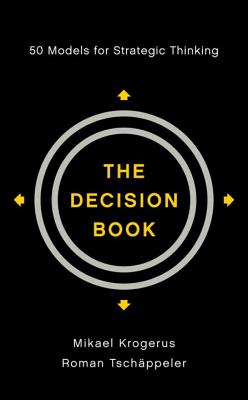
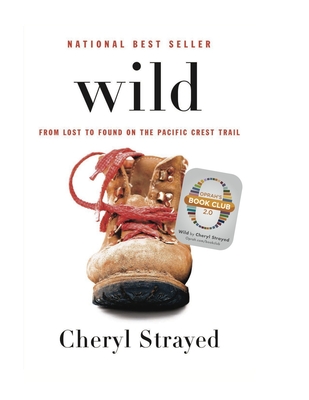
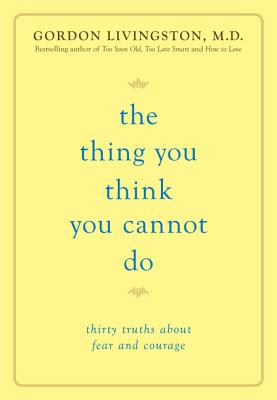
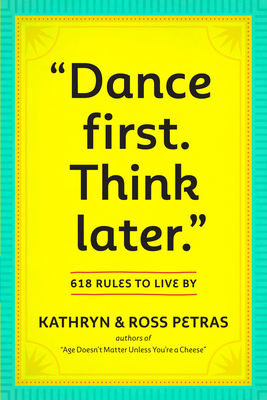
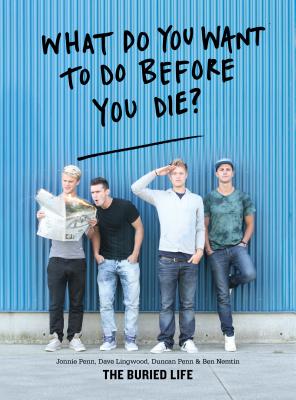
No comments:
Post a Comment